Recent Articles
Popular Makes
Body Types
2018 Hyundai Kona Road Test and Review
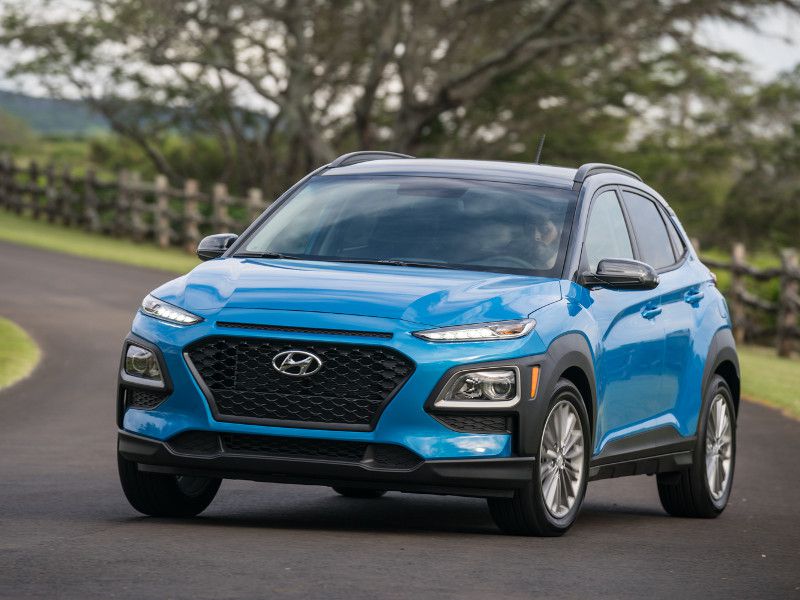
2018 Hyundai Kona blue driving on road ・ Photo by Hyundai
As is the case with most automakers these days Hyundai’s business model revolves around three things: SUVs, SUVs, and SUVs. With the introduction of the all-new 2018 Hyundai Kona, the Korean manufacturer now offers four SUVs, with updated versions of its Santa Fe and Tucson models on the way for 2019, as well as a fuel cell SUV called the Nexo.
As Hyundai’s smallest and least expensive SUV, the Kona slots below the compact Tucson in the brand’s lineup. It’s a subcompact crossover and completes in a class exploding in popularity as more and more buyers are choosing small SUVs over sedans and coupes. Built in Korea, the Kona competes with other stylish, fun-to-drive and fuel efficient five-doors in the fast-growing segment, including the Nissan Kicks and Rogue Sport, Ford EcoSport, Mazda CX-3, Honda HR-V, Chevrolet Trax, Toyota C-HR, and Jeep Renegade.
Four Trim Levels to Choose From
Four trim levels are available on the 2018 Hyundai Kona: SE, SEL, Limited, and Ultimate. Each is available with standard front-wheel drive or optional all-wheel drive for an additional $1,300. The SE and SEL models are powered by a smooth and fuel efficient 2.0-liter four-cylinder engine with 146 hp and a six-speed automatic transmission. Limited and Ultimate models get a more advanced powertrain: a 175-hp turbocharged 1.6-liter four-cylinder and a slick-shifting seven-speed dual-clutch automatic.
Prices start at $20,450, including a $950 destination charge, for the SE with front-wheel drive. The better-equipped SEL starts around $22,000, while the top-of-the-line Ultimate, like our test vehicle, costs $28,350. At that price, the Kona Ultimate comes loaded with a long list of active safety systems, 18-inch wheels, leather, heated front seats, navigation, and a sunroof. There are no available options, except all-wheel drive.
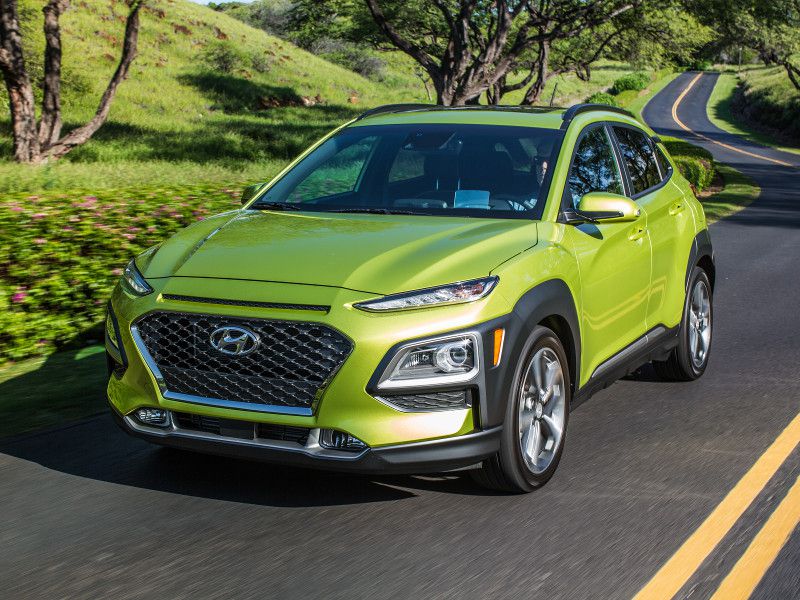
Photo by Hyundai
Comfortable Interior
Hyundai has done a wonderful job with the interior of the 2018 Kona. The heated leather front seats in our Kona Ultimate test vehicle were firm, supportive, and comfortable. The driver’s seat is height-adjustable, and a tilting and telescopic steering wheel is standard so it’s easy to find your preferred driving position. All the controls are well-placed and function with a feeling of quality. The Kona seats four adults comfortably, and rear seat space is competitive for this segment. It can haul five if the ride is short.
Fit and finish are excellent; however, there is an abundance of hard plastic. The interior is also quite dark. There are unique blue bezels on the Kona’s gauges and welcome white stitching on its seats, but some additional contrasting trim would be nice to break up the abundance of black. Its hand-lever parking brake is also a bit too old school, even for this class. An electronic push-button parking brake would be better.
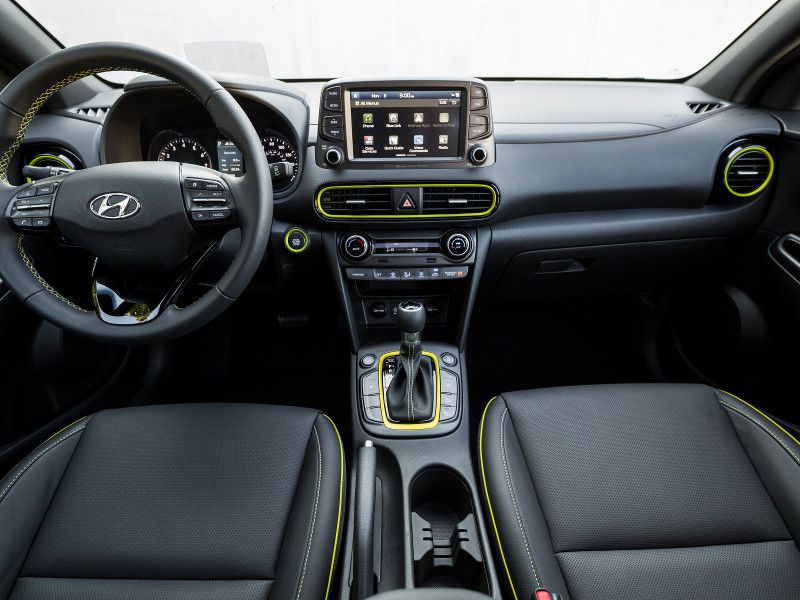
Photo by Hyundai
Solid Infotainment Tech
Front and center on the Kona Ultimate’s dashboard is an 8-inch infotainment touchscreen (it's 7-inches in the other models), which is large for the class and within easy reach. There are also large knobs for volume and tuning of the Infinity premium audio system, which has eight speakers, and the navigation system features up-to-date graphics and simple inputs. Bluetooth is standard, and the system is compatible with Apple CarPlay and Android Auto.
Onboard Wi-Fi is not available, but Hyundai’s Blue Link system allows you to connect you Kona to your smartphone so you can lock and unlock its doors remotely, find your car in a parking lot, and perform other functions. Our test car also had wireless phone charging, as well as a head-up display, which projects the speedometer and other information in the driver’s line of vision. True, it’s redundant information already found on the Kona’s gauge cluster, but it’s a cool tech touch.
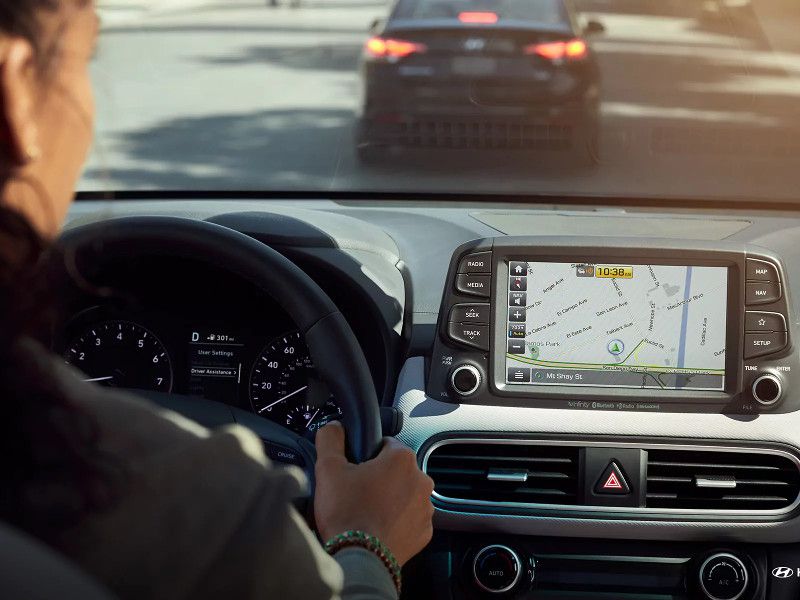
Photo by Hyundai
Plenty of Storage and Cargo Space
If cargo volume is one of your highest priorities in a subcompact crossover, the Kona may have what you’re looking for. It offers 19.2 cubic feet of space behind its rear seat, which is large for this class. Every Kona also comes standard with a 60/40 split-folding rear seat, which easily drops flat to expand that space to 45.8 cubic feet. There’s also a useful cargo bin under the floor and a hard, high-quality cargo cover. Surprisingly the Kona does not offer a power liftgate, though it is light and easy to open and close manually.
There’s also plenty of storage inside the SUV. The console bin isn’t huge, but it’s deep. And there’s a large bin ahead of the shifter that is perfect for your phone and wallet. The door pockets are small, but they have slots for water bottles. The two front cupholders are large and well placed behind the shifter, so tall drinks don’t interfere with any of the controls. The two rear cupholders are smaller and are housed in a center fold-down armrest.
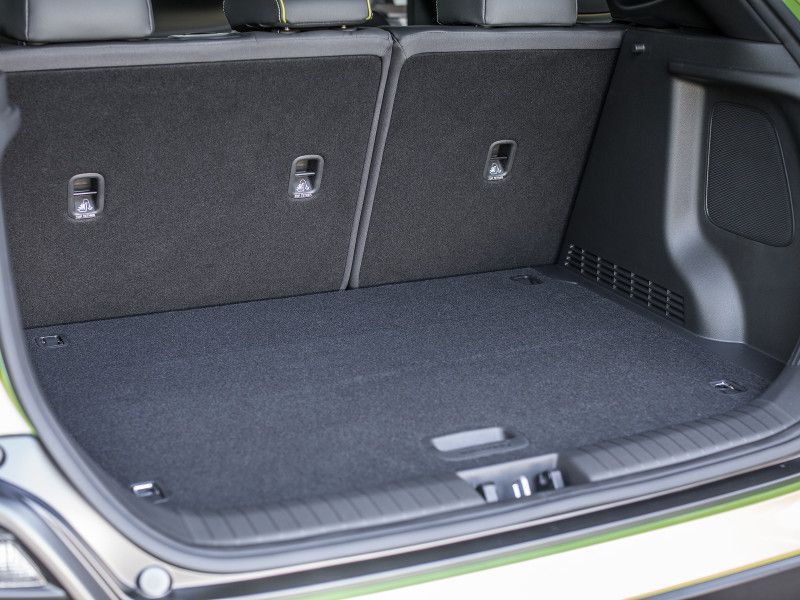
Photo by Hyundai
Cool, Modern Styling
Hyundai has also nailed the look of the 2018 Kona. This is one of the sexiest SUVs in this class, with a rugged upscale style that’s going to send a few competitors scrambling back to their design tables looking for some visual appeal. With its large upright grille, squinted headlamps and slotted nose, the Kona looks sporty and purposeful. The design is extremely modern, but it’s grounded with old-school muscularity in the form of bulging fenders, chiseled flanks, and a fastback roofline. Hyundai has also dressed the Kona with an abundance of black plastic wheel-well trim. This could have backfired and given the SUV a cheap downmarket vibe, but instead it’s a masterstroke of design, creating a rough-and-ready look.
Overall, the Kona’s exterior isn’t exactly understated, but it’s curvaceous, athletic, and youthful. And it turns heads. During our week with the SUV, more than a few neighbors and strangers noticed the Kona and asked about it. Most guessed it was more expensive than it really is.
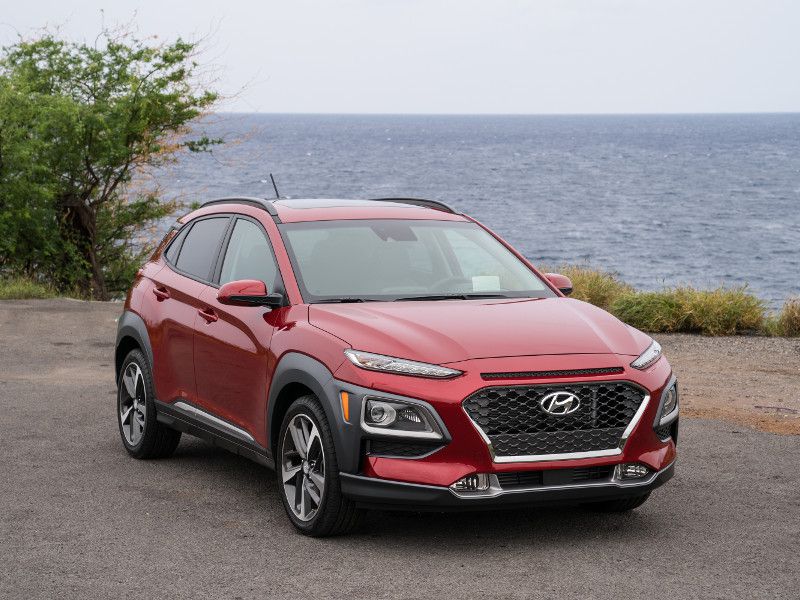
Photo by Hyundai
Fun-to-Drive Dynamics
With 175 horsepower, the Kona Ultimate feels racy off the line and has ample passing power on the highway. Accelerating from 0-60 mph takes 6.6 seconds, which makes it one of the quickest little SUVs available, blowing the doors off competitors like the Mazda CX-3, Ford EcoSport, and Toyota C-HR. The Hyundai’s seven-speed automatic transmission works well with its turbocharged four-cylinder engine. Although there are no paddle shifters, the Kona does have a manual mode so you can choose your own gears. Drivers can also select Sport mode, which is activated with a button on the console. It increases the engine’s throttle response and recalibrates the transmission for more response. The additional performance is apparent.
Handling is also impressive, with good balance and quick steering. On the road, the Kona feels small and responsive, but also substantial. Some, however, may find its ride to be a bit too firm, although we suspect this is a side effect of the Ultimate’s 18-inch wheels and tires. It probably rides more smoothly with the SE model’s 16-inch wheels or the 17-inchers on the SEL.
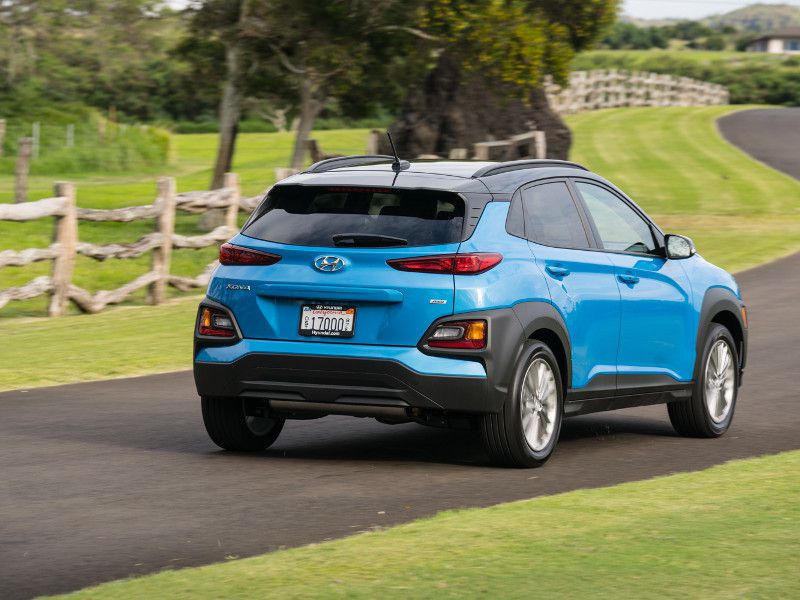
Photo by Hyundai
Impressive Fuel Economy
Despite its strong performance, the Kona is one of the most fuel-efficient subcompact SUVs. With front-wheel drive and the 2.0-liter engine, it's rated at 27 mpg in the city and 33 mpg on the highway. With the additional weight of the optional all-wheel drive system, those numbers drop slightly to 25 mpg city and 30 mpg on the highway.
The upper trim levels with the turbocharged engine offer more performance without a sizable sacrifice in fuel economy. With front-wheel drive, the Kona Limited and Ultimate models are rated at 28 mpg in the city and 32 mpg on the highway, and 26 mpg city and 29 mpg highway with all-wheel drive. I averaged 30.4 mpg during a week of mixed driving around Los Angeles in our front-wheel drive test vehicle, on regular-grade gasoline.
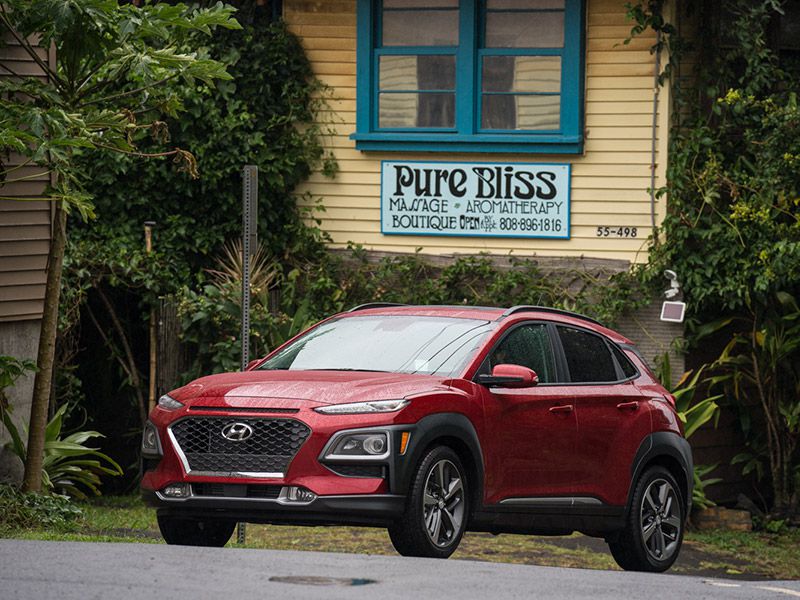
Photo by Hyundai
Advanced Safety Systems and Technology
Although the Kona hasn't yet been crash-tested, all of Hyundai’s other current SUVs have been named a Top Safety Pick by the Insurance Institute for Highway Safety and received a five-star overall crash test rating from the National Highway Traffic Safety Administration.
All Kona trims come standard with advanced safety systems and technology, including a rearview camera. The list grows once you step up to the SEL model, which gets standard blind-spot monitoring with a rear cross-traffic alert. Our Kona Ultimate test vehicle also came standard with a driver attention warning, lane-keep assist, automatic high beams, and a forward collision avoidance system, which can apply the brakes for you in an emergency situation. Surprisingly, radar-based adaptive cruise control isn't available.
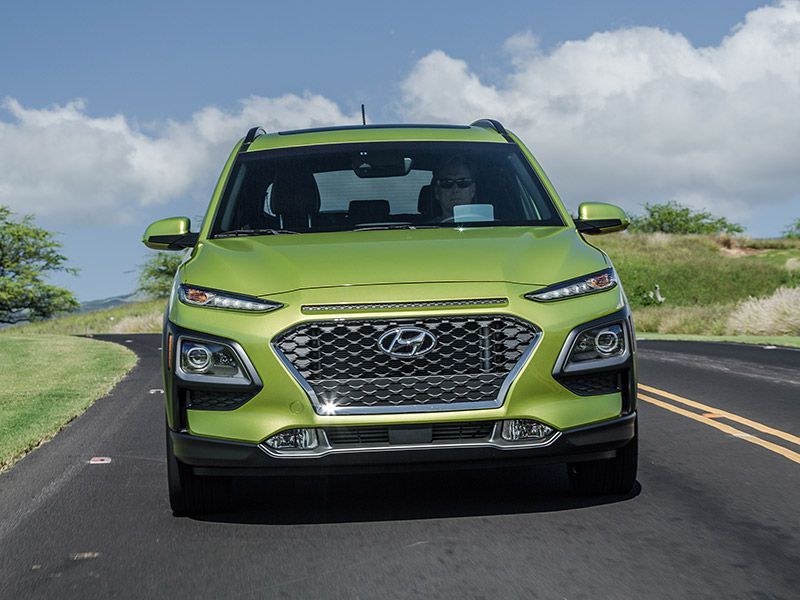
Photo by Hyundai
Final Thoughts
Comfortable, cool-looking, and fun-to-drive, the new 2018 Hyundai Kona is about to become a serious player in the subcompact SUV class. Although some may find the Kona Ultimate’s ride to be a bit overly firm, this Hyundai offers an attractive and well laid out interior, ample cargo space, exceptional safety features, and impressive power and handling.
The Kona SE is priced attractively, but we recommend stepping up to the SEL model for another $1,650. You’ll appreciate the additional features like its 17-inch wheels, keyless entry, push-button start, heated front seats, blind-spot monitoring, and a rear cross-traffic alert. The extra horsepower and equipment found in the Kona Limited and Ultimate are also worth the additional funds.
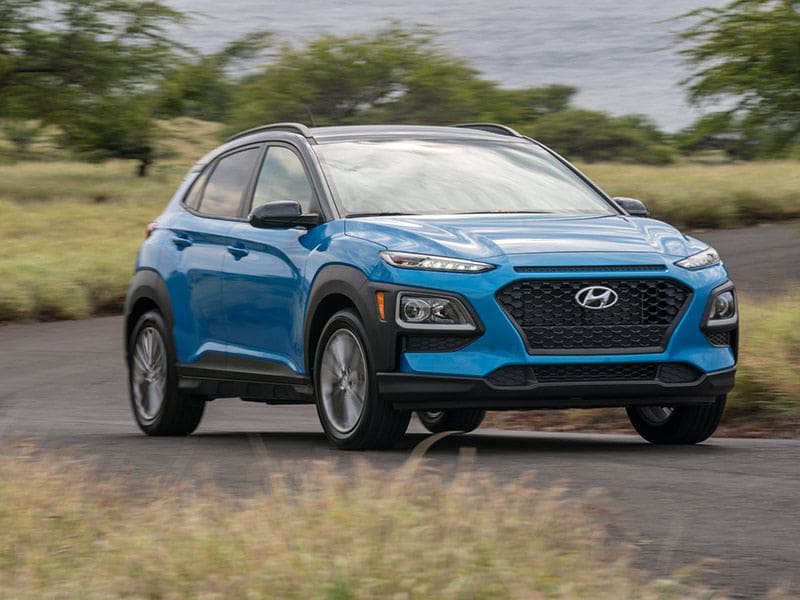
Photo by Hyundai